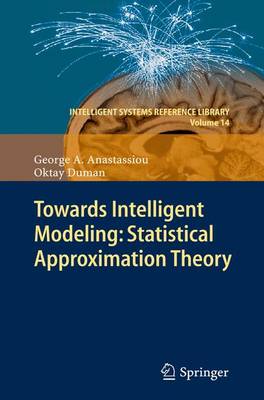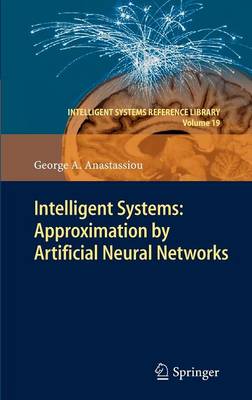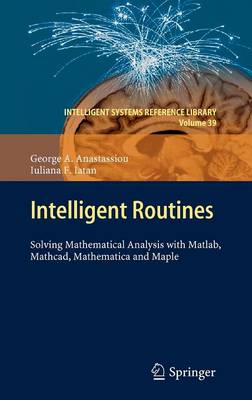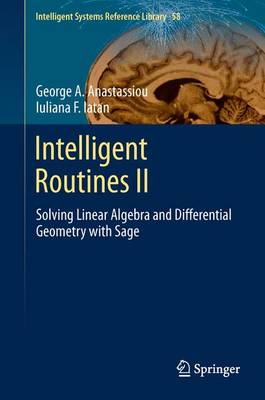Intelligent Systems Reference Library
5 primary works
Book 5
Book 14
Towards Intelligent Modeling: Statistical Approximation Theory
by George A Anastassiou and Oktay Duman
The main idea of statistical convergence is to demand convergence only for a majority of elements of a sequence. This method of convergence has been investigated in many fundamental areas of mathematics such as: measure theory, approximation theory, fuzzy logic theory, summability theory, and so on. In this monograph we consider this concept in approximating a function by linear operators, especially when the classical limit fails. The results of this book not only cover the classical and statistical approximation theory, but also are applied in the fuzzy logic via the fuzzy-valued operators. The authors in particular treat the important Korovkin approximation theory of positive linear operators in statistical and fuzzy sense. They also present various statistical approximation theorems for some specific real and complex-valued linear operators that are not positive. This is the first monograph in Statistical Approximation Theory and Fuzziness. The chapters are self-contained and several advanced courses can be taught.
The research findings will be useful in various applications including applied and computational mathematics, stochastics, engineering, artificial intelligence, vision and machine learning. This monograph is directed to graduate students, researchers, practitioners and professors of all disciplines.
Book 19
Intelligent Systems: Approximation by Artificial Neural Networks
by George A Anastassiou
For the convenience of the reader, the chapters of this book are written in a self-contained style.
This treatise relies on author's last two years of related research work.
Advanced courses and seminars can be taught out of this brief book. All necessary background and motivations are given per chapter. A related list of references is given also per chapter. The exposed results are expected to find applications in many areas of computer science and applied mathematics, such as neural networks, intelligent systems, complexity theory, learning theory, vision and approximation theory, etc. As such this monograph is suitable for researchers, graduate students, and seminars of the above subjects, also for all science libraries.
Book 39
Real Analysis is a discipline of intensive study in many institutions of higher education, because it contains useful concepts and fundamental results in the study of mathematics and physics, of the technical disciplines and geometry. This book is the first one of its kind that solves mathematical analysis problems with all four related main software Matlab, Mathcad, Mathematica and Maple. Besides the fundamental theoretical notions, the book contains many exercises, solved both mathematically and by computer, using: Matlab 7.9, Mathcad 14, Mathematica 8 or Maple 15 programming languages. The book is divided into nine chapters, which illustrate the application of the mathematical concepts using the computer. Each chapter presents the fundamental concepts and the elements required to solve the problems contained in that chapter and finishes with some problems left to be solved by the readers. The calculations can be verified by using a specific software such as Matlab, Mathcad, Mathematica or Maple.
Book 58
“Intelligent Routines II: Solving Linear Algebra and Differential Geometry with Sage” contains numerous of examples and problems as well as many unsolved problems. This book extensively applies the successful software Sage, which can be found free online http://www.sagemath.org/. Sage is a recent and popular software for mathematical computation, available freely and simple to use. This book is useful to all applied scientists in mathematics, statistics and engineering, as well for late undergraduate and graduate students of above subjects. It is the first such book in solving symbolically with Sage problems in Linear Algebra and Differential Geometry. Plenty of SAGE applications are given at each step of the exposition.




